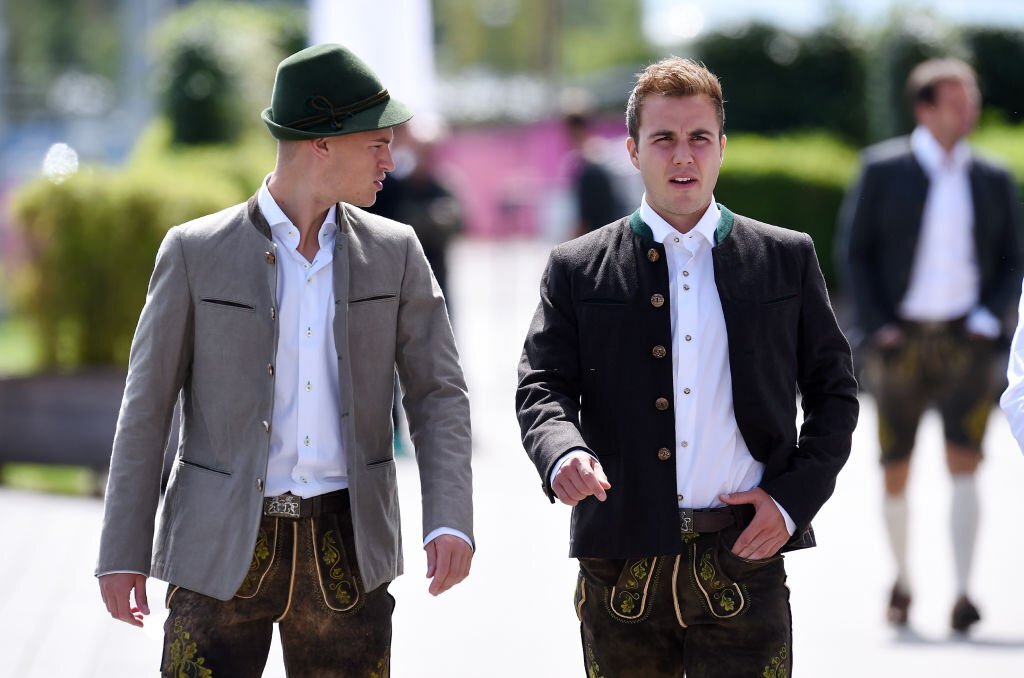Lederhosen Galore: The Right Types of Bavarian Trousers to Choose From

Oktoberfest is a grand feast in Munich with everyone adorned in the garment of Bavaria. The traditional Lederhosen trousers serve as the dress code for men and Dirndl for women. All the men among 5-7 million people attending Volksfest are wearing these leather breeches. These traditional shorts come in different materials and lengths. The right choice of Bavarian trachten depends on the comfort of the wearer.
Lederhosen Types Based on Material
The types of material used in making the Lederhosen include;
1. Deerskin Lederhosen
Lederhosen wearers often consider deerskin the top choice, steeped in tradition. The most expensive lederhosen studded with diamonds was made of deerskin and sold for a whopping $114,000. The supple texture of this leather type contributes to a tight fit that embraces the wearer’s body over time. The deerskin color options range from a warm, earthy brown to a luscious, dark chocolate, depicting the character of deerskin.
The true allure of this leather type lies in its distinctive grain pattern. This very characteristic elevates deerskin lederhosen to the epitome of authenticity. These lederhosen are among the more expensive options, but they are a worthy investment for those with a genuine Bavarian spirit.
2. Goatskin Lederhosen
Goatskin lederhosen is a go-to choice for a budget-friendly option without sacrificing authenticity. These lederhosen made from goatskin offer an economical alternative without compromising on quality. These traditional trousers exhibit a strength that stands the test of time.
Unlike their deerskin counterparts, goatskin lederhosen tends to embrace lighter hues, ranging from a gentle beige to a cool grey. This not only imparts a contemporary twist but also preserves their traditional allure. The leather, although marginally stiffer than deerskin, yields to the wearer’s shape with use, delivering personalized fit.
3. Cowhide Lederhosen
Split cowhide lederhosen is full-grain leather with blemish and scarred surfaces, yet affordable. It’s a tough and sturdy leather, standing up well to the wear and tear. It is not the smoothest of the leather options available but it is heavy and thick making this type of Bavarian short ideal for winters.
No long list of products or special care is required to keep these pair of German lederhosen in good shape. All the shades of brown are available in the cowhide lederhosen.
4. Suede Lederhosen
For those who prioritize style and comfort over sticking to tradition, suede lederhosen emerges as a chic alternative. Suede, characterized by its napped finish, delivers a plush, velvety texture, ensuring remarkable comfort even during prolonged wear.
The colors available for suede lederhosen are from classic browns to vibrant blues and greens, particularly attracting the younger generations. However, the suede demands thorough care and maintenance compared to deerskin, cowhide, or goatskin, which are more susceptible to stains and water damage.
Lederhosen Types Based on Length
The types of Lederhosen based on length include;
1. Kurze Lederhosen
The Kurze lederhosen, also known as short lederhosen, is one of the most easily recognizable types. These shorts reach mid-thigh, perfect for warm weather or lively rounds of traditional Bavarian dancing. Despite their shorter length, they showcase the same intricate embroidery and traditional character that their larger counterparts have.
Not to be deceived by their casual appearance; Kurze lederhosen are as authentic as their lengthier counterparts. They’re a favored choice among both locals and visitors, particularly during the festive season of Oktoberfest. Paired with a checkered shirt, sturdy boots, and a traditional Bavarian hat these leather shorts complete the look.
2. Kniebundlederhosen
The Kniebundlederhosen, bundhosen, or knee-length lederhosen, makes for a great choice for the classic look. These reach just below the knee and are usually paired with high socks or leg warmers to keep warm in chillier weather. What sets the Kniebundlederhosen apart is their slightly more formal vibe compared to the shorter versions. They often make appearances at weddings or other special occasions.
Despite their longer length, they showcase the same intricate embroidery as the Kurze, but with more room for elaborate designs. Surprisingly, their formal status, Kniebundlederhosen manages to strike a balance in every aspect. These leather trousers offer comfort and practicality alongside their traditional style, making them a perfect fusion of tradition, style, and functionality.
3. Lange Lederhosen
For embracing tradition and wanting to make a bold statement, Lange lederhosen, also known as long lederhosen is the ideal choice. These full-length lederhosen types are the most traditional variant, often seen at formal events or during colder weather.
What makes these Lange leather trousers unique is the intricate embroidery. It runs along the entire length of the trousers, showcasing the precise craftsmanship involved in their creation. They are typically paired with a traditional Bavarian jacket, creating a striking and authentic ensemble. While they might not be as widespread as the shorter Kurze or Kniebund styles, Lange lederhosen holds a special significance in Bavarian culture.
Wrapping Up!
Lederhosen is ideal for men at Oktoberfest or any grand Bavarian feast. These leather shorts come in different variants in terms of material choices and the length of the trousers. Deerskin, goatskin, cowhide, and suede lederhosen are all great options in terms of material. While Kurze, kniebund, and lange lederhosen are options with different lengths. The only right type of Bavarian tracht is the one in which the wearer feels comfortable.
